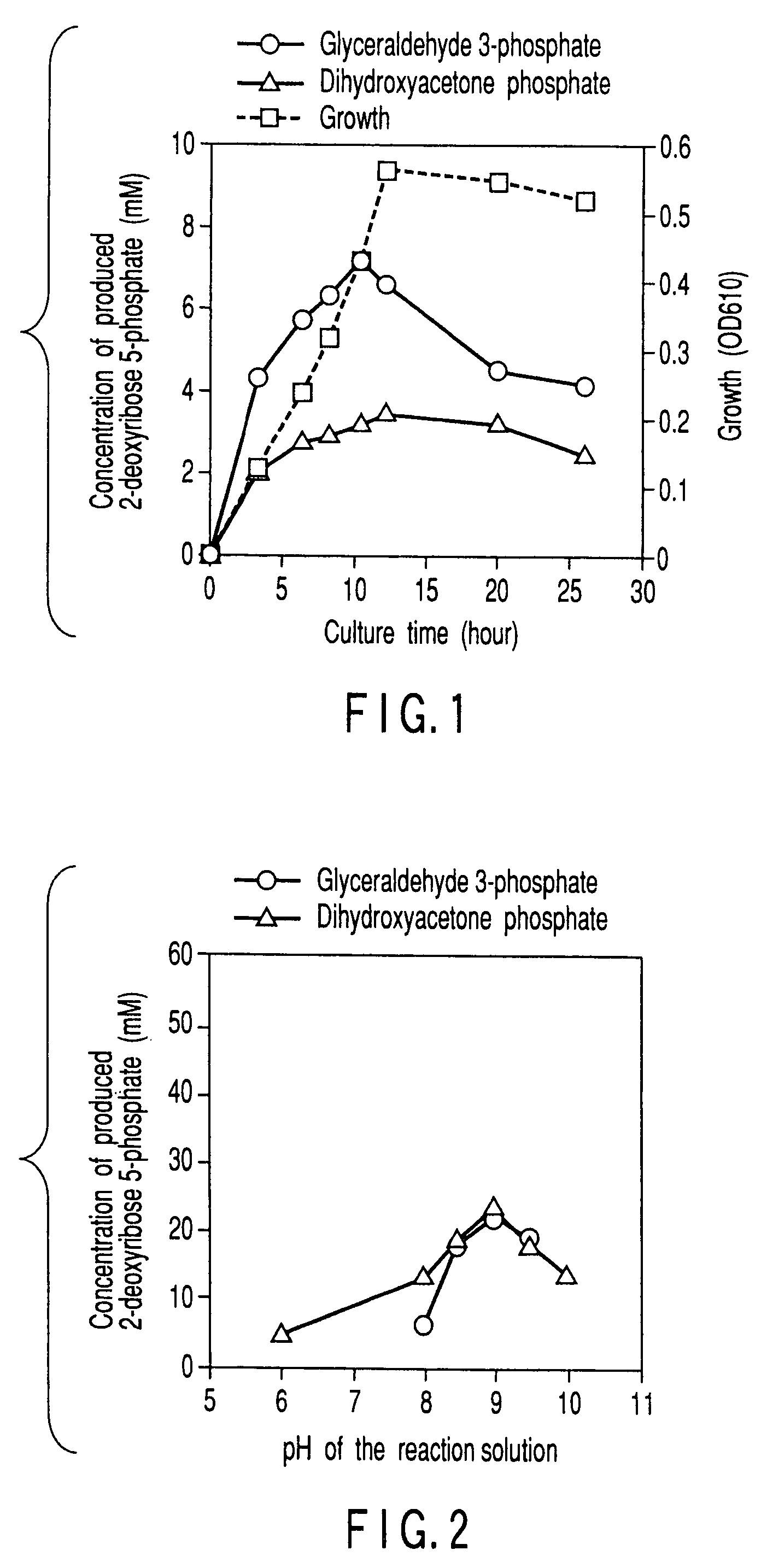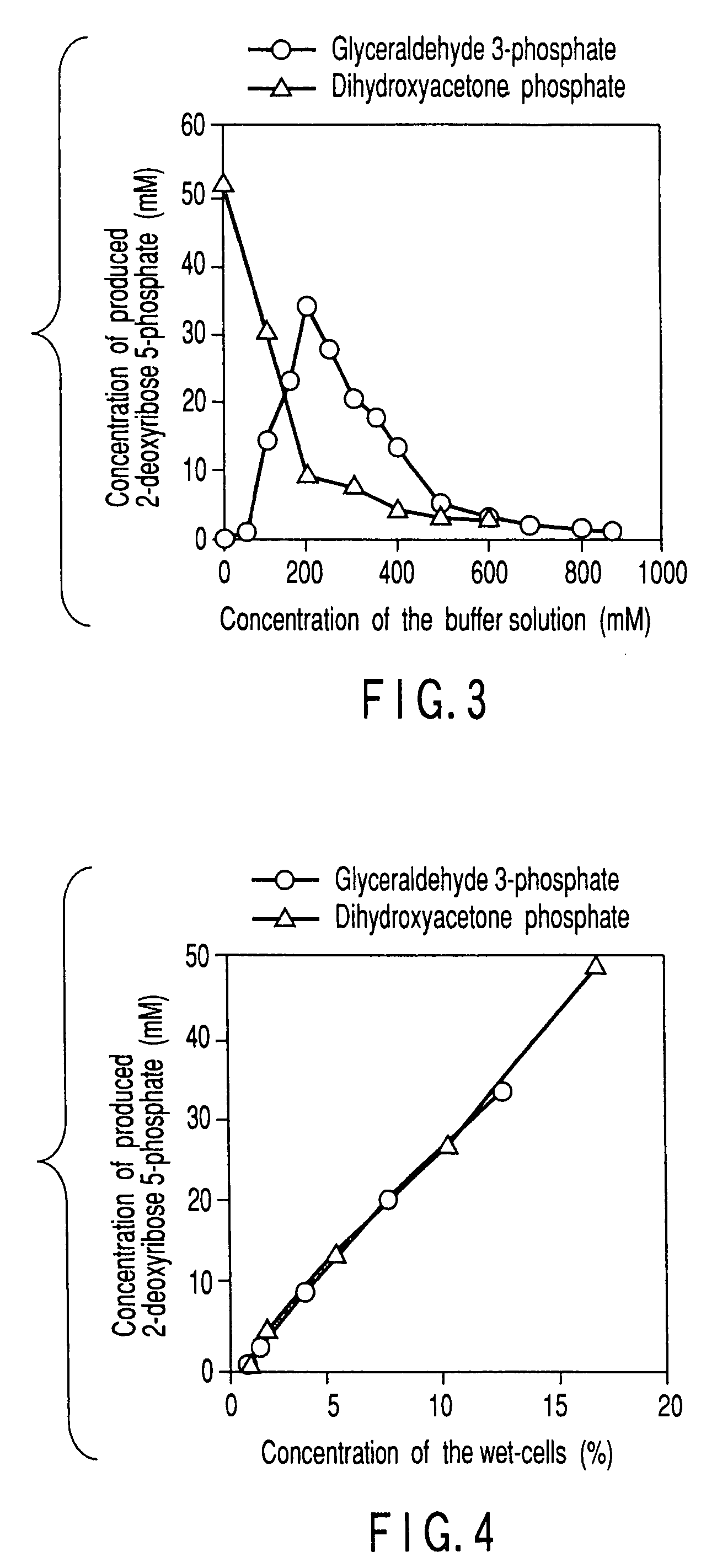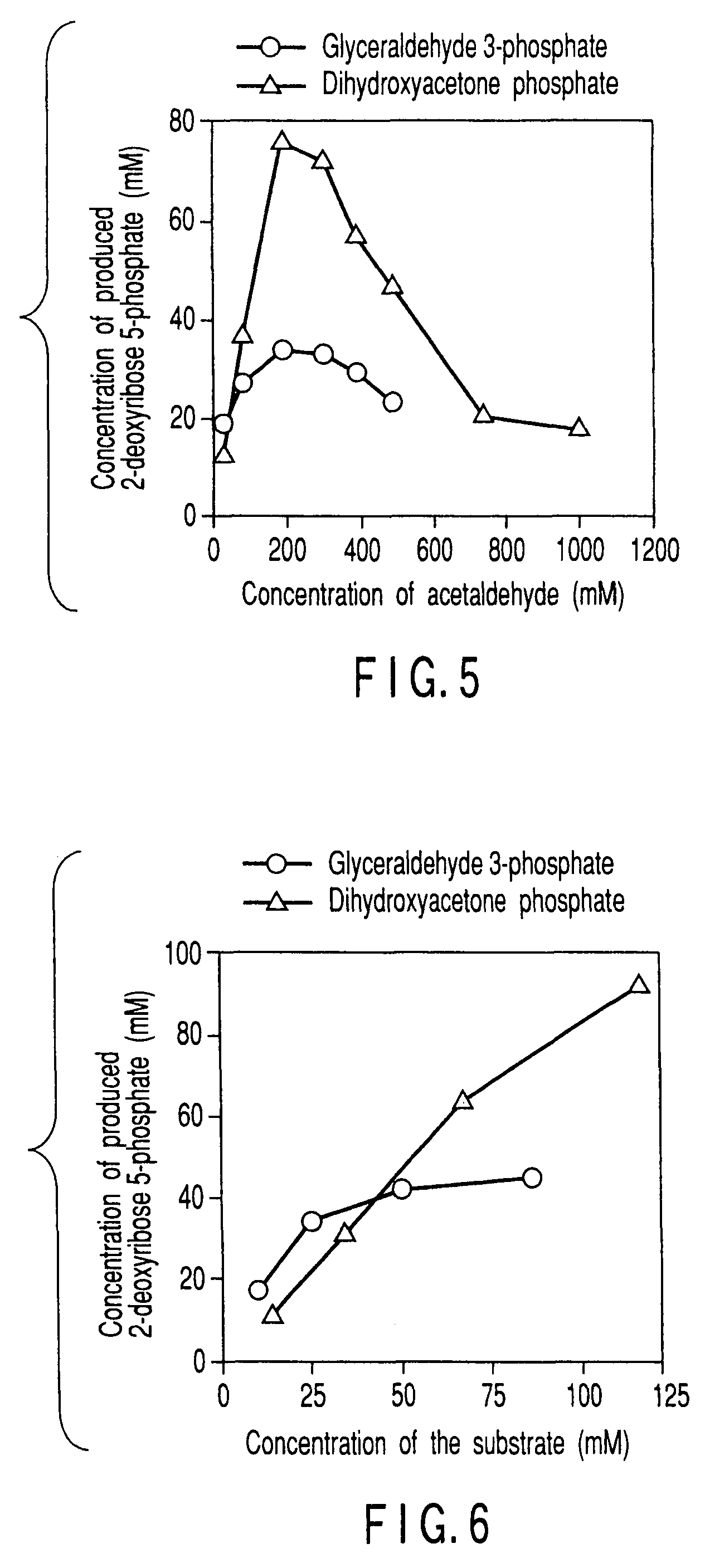Method of preparing 2-deoxyribose 5-phosphate
a 2-deoxyribose and 5-phosphate technology, which is applied in the field of preparation of 2deoxyribose 5phosphate, can solve the problems of difficult regioselective phosphorylation of 2-deoxyribose, high cost of dna raw materials, and inability to prepare 2-deoxyribose 5-phosphate inexpensively by either of the above-mentioned two methods, and achieves high yield and high yield
- Summary
- Abstract
- Description
- Claims
- Application Information
AI Technical Summary
Benefits of technology
Problems solved by technology
Method used
Image
Examples
experiment example 1
[0142]First Screening on the Basis of the Capability of Degrading 2-deoxyribose
[0143]700 strains of bacteria, 100 strains of actinomycetes, 100 strains of molds, 100 strains of basidiomycetes, and 500 strains of soil bacteria which are capable of utilizing 2-deoxyribose as nutrition, were cultured by the conventional shaking culture or stationary culture, whereby wet-cells of each type of microorganisms were obtained. The wet-cells of each type of microorganisms were added to a phosphate buffer solution (100 mM, pH 7.0) containing 2-deoxyribose (20 mM), and it was shaken for 1 or 2 days at 28° C. The resultant solution was filtered, and a predetermined amount of the filtrate was spotted on a TLC plate. Thereby the capability of degrading 2-deoxyribose was analyzed. The result is shown in Table 1.
[0144]
TABLE 1Number of strainType ofNumber ofcapable of degradingmicroorganismstrain used2-deoxyriboseBacteria7008Actinomycetes1003Molds1000Basidiomycetes1003Soil bacteria50068
experiment example 2
[0145]Second Screening on the Basis of the Capability of Producing Acetaldehyde from 2-deoxyribose by the Action of the Cell Extract Solution
[0146]Each strain whose capability of degrading 2-deoxyribose had been confirmed in Experiment example 1 was cultured by the conventional method. The cells of each cultured strain were disrupted by supersonication and centrifuged, and thereby supernatant was obtained. 20 μL of 100 mM Tris-hydrochloric acid buffer solution (pH 8.8), 10 μL of 0.5 mM NADH (reduced nicotinamide adenine dinucleotide), 30 U of alcohol dehydrogenase (manufactured by Sigma Aldrich Japan co., “1U” indicates an enzyme activity whereby 1.0 μmol of ethanol is completely converted into aldehyde for 1 minute at pH 8.8 at 25° C.), and 10 μL of either 2-deoxyribose 5-phosphate or 2-deoxyribose were added to 20 μL of the obtained supernatant. The resultant solution was left still at 30° C. The change in absorbance at 340 nm with the passage of time was measured.
[0147]
[0148]In t...
experiment example 3
[0151]Selection of Culture Medium for Culturing the Microorganism
[0152]The 8 strains of the soil bacteria, which had exhibited high enzyme activity in Experiment example 2, were transferred to each type of the culture medium described below. Each sample was subjected to shaking culture overnight at 28° C., whereby wet-cells of each bacterium was obtained. For each sample, the activity of degrading 2-deoxyribose 5-phosphate was measured in a manner similar to that of Experiment example 2. The result showed that the enzyme activity is generally increased by twice or several times in the DR culture medium, as compared with the enzyme activity observed in the other two types of the culture medium. Similarly in a case of adding, to the DR culture medium, fructose, fructose-1,6-bisphosphate, dihydroxyacetone phosphate or the like, instead of 2-deoxyribose, the enzyme activity was enhanced, although the enhancing effect was not so excellent as that of 2-deoxyribose.
[0153](Culture Medium)
[0...
PUM
 Login to View More
Login to View More Abstract
Description
Claims
Application Information
 Login to View More
Login to View More - R&D
- Intellectual Property
- Life Sciences
- Materials
- Tech Scout
- Unparalleled Data Quality
- Higher Quality Content
- 60% Fewer Hallucinations
Browse by: Latest US Patents, China's latest patents, Technical Efficacy Thesaurus, Application Domain, Technology Topic, Popular Technical Reports.
© 2025 PatSnap. All rights reserved.Legal|Privacy policy|Modern Slavery Act Transparency Statement|Sitemap|About US| Contact US: help@patsnap.com



